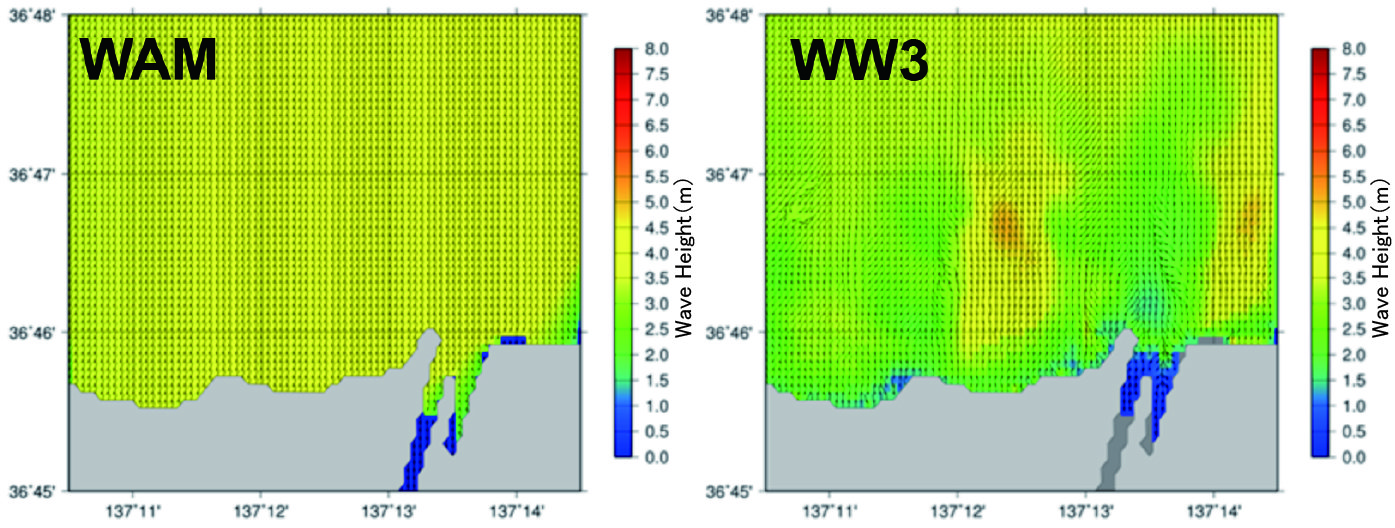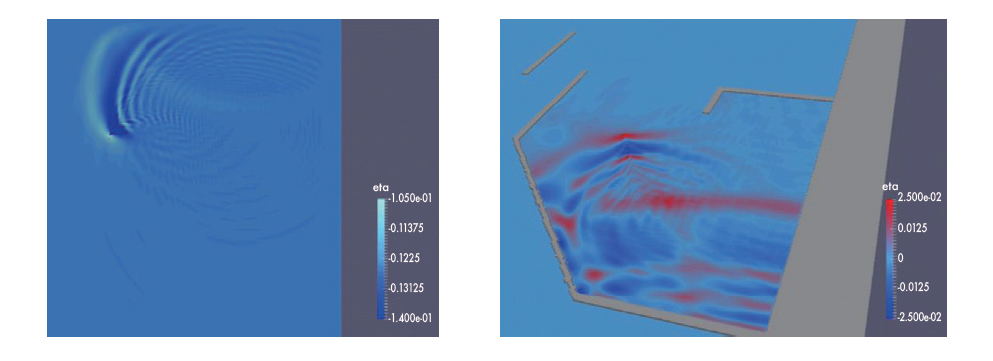Major Research 1C. Research on Mitigation and Restoration of Storm and Surge Water Disasters
Background and Objectives
Since the Ise Bay Typhoon struck in September 1959, there have been no devastating storm surge and wave disaster in Japan. However, the U.S. suffered severe damage due to Hurricane Katrina in September 2005, and so did the Philippines due to Typhoon Haiyan in November 2013. In future, global warming might bring higher storm surges and waves than those we have expected in Japan.
Therefore, this research focuses on how to mitigate damage by the worst storm surge and wave condition and how to rapidly recover and reconstruct after the damage has occurred. The purpose of this research is to change disaster prevention and mitigation measures into a pre-disaster stage from postdisaster one. Therefore, we conduct research to encourage hard and soft measures. Specifically, we will develop a numerical model to estimate the worst storm surge and wave condition and damage and will also develop design methods to build robust structures.
Research topics
Research and development comprises the following two subthemes:
1.Research on storm surge/wave and maximum damage estimation
We will develop a highly accurate storm surge and flooding model which incorporates a meteorological model as well as a real-time predicting model for storm surges and waves. As global warming progresses, intense typhoons might appear that cause high storm surges and waves in coastal areas. We will also utilize the models and wave observation data to elucidate the storm surge and wave characteristics.
2.Research on the technology to reduce maximum storm surge/wave disasters
We will elucidate structural stability under a severe condition that storm surge and wave height simultaneously become higher than those expected and will establish methods for designing breakwaters and seawalls for the condition.
Activities in FY 2016
In elucidation of oceanographic phenomena based on observation data, we summarized the statistical analysis of nationwide wave observation data acquired in 2015 into an annual report. Seabed wave gauges placed at six coastal points and GPS-mounted wave buoys placed at three deepwater points updated records on existing maximum significant wave heights. We will continue to analyze data from 2016. Regarding a directional spectrum estimation method, we avoided convergent calculation to obtain stable solutions through short-time calculation, and could enhance the applicability to swell. We also analyzed winds and waves off Hiratsuka in Sagami Bay to examine the physical processes of breeze.
In the improvement of the prediction accuracy of swell, we hindcasted Yorimawari-nami Waves, which were observed at Toyama Bay in 2008, and led that WW3 could produce wave heights and periods in the bay better than WAM. In addition, regarding the coastal area which has unique bathymetry and is called Aigame, we input the wave spectra obtained from WAM and WW3 into a Boussinesq model for wave transformation and also discussed the causes of errors in the wave spectral. We will simulate waves in Japan to validate the accuracy of swells.

Distribution of wave direction and height around Toyama
In the study on high performance harbor tranquility analysis with considering harbor waves generated in a basin, we performed calculations of ship waves in a harbor basin to take into account the differences in lateral flux, which is caused by a ship's thrust, and ship shape. The numerical model can simulate waves which are produced by a turning ship as well the reflection of ship waves by breakwaters. This model is expected to be used for evaluating port tranquility which takes into account both waves penetrated from the outside of the harbor and generated by ships in the inside. Hereafter, we will study methods of calculating cargo-handling operation rates which take into consideration of harbor waves under strong wind conditions.

Waves generated by a turning ship (left figure) and reflection of ship waves by breakwaters (right figure)
In the study on the design forces for unexpected high waves and mitigation of coastal disasters, we calculated the wave transformation and the wave setup due to breaking in storms. We confirmed that the wave setup is correlated to the incident wave height regardless of the tide level at each port. Therefore, we estimated the suction and wind-drift effect of storm surge as well as the wave setup due to breaking at tide stations, and then discussed the relationship between the wave height and the storm surge for various return periods.
In the study on very intense typhoon wind, storm surge and wave characteristics in Japanese bays, we showed that a worst-class typhoon can cause storm surge of 3m or higher in Kagoshima Bay, which surpasses the existing maximum value.
In developing of the maritime and environmental simulation model using meso-scale weather forecasting model, we almost assembled the model and reached the stage to begin various verification and case studies.
In the study on the wave force, overtopping and overflow under a large wave condition combined with storm surge and tsunami, we collected seawall and dyke failure in Japan through field investigation. In addition, we conducted a series of hydraulic model experiments and demonstrated that water pressure is expressed as the sum of the static pressure corresponding to water levels and the wave pressure, and that the water pressure tends to be proportional to the square root of the product of the wave height and length. Hereafter, we will conduct experiments on transmitted waves through rubble mound and will suggest a wave pressure equation to be used in the design of coastal defense structures.



